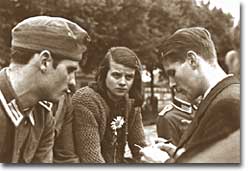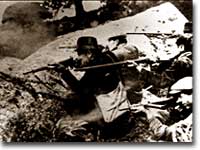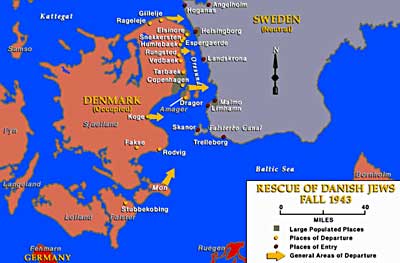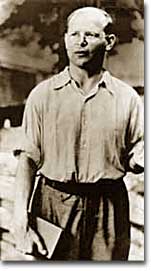| HOME |
By 1942, Germans occupied all of France, helped in part by French Legionnaires and the new French government seated in Vichy led by World War I hero Marshall Petain. The Vichy government collaborated with the Nazi regime, in part by facilitating the expulsion of French Jews to Nazi concentration camps. Of the nearly 76,000 Jews that Vichy France turned over to the Nazis, only 2,000 survived. De Gaulle's Free French movement was the most organized of the resistance movements.
Resistance in Scandinavia took various forms, influenced in part by geography. In Norway, army units conducted guerilla warfare against the Nazis in the mountains. In Denmark and the Netherlands, resistance involved sabotaging Nazi installations, rescuing Jews from deportation, and gathering intelligence for Allied forces. In one bold and dangerous act of defiance, members of the Danish underground smuggled nearly all of Denmark's 8,000 Jews into neighboring neutral Sweden, just before they were scheduled to be sent to Nazi concentration camps. In the Netherlands, resisters hid Anne Frank and her family until their discovery and deportation to camps. The young German girl captured her experiences in her diary, published after her death as the Diary of Anne Frank.
The Nazi crushing of resistance in Poland was especially brutal. The Warsaw uprising by Polish Jews in February 1943 ended in their deportation to concentration camps. Nearly 3 million Polish Jews died during the war. In August 1944, the Polish Home Army rebelled against the Nazi occupiers of Warsaw. Soviet troops camped nearby did nothing to stop the Nazis' bloody crackdown. After 63 days of fighting, the Germans ended the revolt and ransacked Warsaw.
In Germany, resistance peaked after the June 1944 D-Day invasion of France. In July, an attempted assassination of Hitler, organized by German army officers, failed. Colonel Claus von Stauffenberg had placed a bomb in a conference room, but the explosion only slightly injured Hitler. The bombing ended organized German resistance to the Nazi regime. Hundreds of co-conspirators and suspects were tortured to death. One co-conspirator, Erwin Rommel, the revered Desert Fox, was given the option of suicide, which he took by ingesting poison. Resistance also took other forms. Italians protested the war in paintings, publications, and with the arrest of Mussolini in 1943. Catholic Church officials protested Nazi euthanasia programs, though they said little about the persecution of Jews. German novelist Thomas Mann broadcast anti-Nazi messages to the German people from his exile in Switzerland. Dietrich Bonhoeffer, a Lutheran minister critical of the Nazis, returned to his native Germany from the United States in 1939 to offer spiritual and intellectual grounds for resistance. His 1943 book Ethics led to his execution at the Buchenwald concentration camp in 1945, one of millions of Europeans to die for their beliefs in God and freedom. |
||
| MAIN | |||
| INVESTIGATION CENTRAL | |||
|
|||



